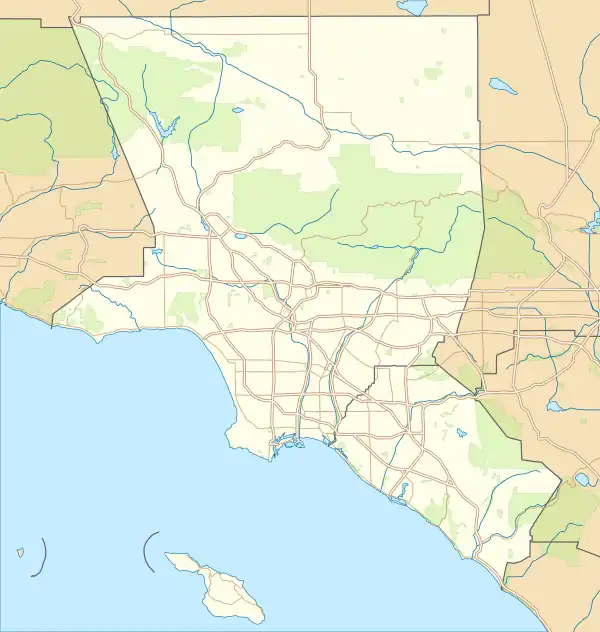Bay Street Beach Historic District
Bay Street Beach Historic District (also known as the Inkwell) is an historic beach in Los Angeles County.[1]
Bay Street Beach Historic District | |
.jpg.webp) | |
   | |
| Location | Roughly bounded by Pacific Ocean, Ocean Front Walk from Vicente Ter. to Crescent Bay Park, Bicknell Ave. extending into ocean |
|---|---|
| Coordinates | 34°00′23″N 118°29′31″W |
| Area | 53 acre |
| NRHP reference No. | 100004116 |
| Added to NRHP | June 26, 2019 |
History
The beach was a place of recreation and leisure, by African Americans, during the Jim Crow era. The beach was located at Pico Boulevard and two city blocks south to Bicknell Street,[2] near Phillips Chapel Christian Methodist Episcopal Church .[3][4]
In 1922, the Santa Monica Bay Protective League was organized to attempt to fence the beach to exclude African Americans.[5]
In 1927, the National Association for the Advancement of Colored People challenged restrictive covenants at Manhattan Beach, south of Santa Monica, which were overturned by the Supreme Court of California .[4]
Alison Rose Jefferson and Michael Blum, documented the historic value of the district. In 2008, the Santa Monica officially recognized the district.[3][6]
References
- "How Racism Ruined Black Santa Monica". LAist. 2020-12-23. Retrieved 2021-06-13.
- "Ocean Park Neighborhood Beach: The Significance of the "Inkwell" in Jim Crow-Era Southern California | The Cultural Landscape Foundation". tclf.org. Retrieved 2021-06-13.
- "Bay Street Beach Historic District | Santa Monica Conservancy". www.smconservancy.org. Retrieved 2021-06-13.
- Jefferson, Alison Rose (2012-10-25). "The Inkwell, Santa Monica, California (1905-1964) •". Retrieved 2021-06-13.
- "The Stained History of Inkwell Beach in Santa Monica". Chasing A. Sun. Retrieved 2021-06-13.
- Dixson, Brennon (2020-10-16). "Local surfers unite to keep Inkwell Beach name". Santa Monica Daily Press. Retrieved 2021-06-13.